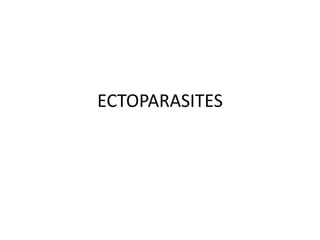The document discusses various ectoparasites, primarily focusing on their characteristics, lifecycle, and impacts on hosts. It covers insects and arachnids such as ticks, fleas, lice, and bot flies, highlighting their roles as disease carriers and their interactions with animals and humans. Additionally, it explains the health risks associated with these parasites and their respective life cycles.













































